'Boring but Big Method': The Ultimate Full Body Barbell Workout Plan for Strength AND Size

When it comes to building size and strength, few tools are as highly regarded as the mighty barbell, and for good reason. Even the most humble of Olympic barbells can handle hundreds of kilograms of weight – few pieces of gym equipment will allow you to shift as much iron and lift your way to progressively higher strength PBs.
Build Strength with Barbells
One of the most effective and battle-tested ways to build peak strength using a barbell is undoubtedly the 5/3/1 Method – the brainchild of renowned strength coach Jim Wendler.
We’ve covered how to perform the 5/3/1 Method for raw strength in detail here. But Wendler offers an alternative approach to the method, designed to help you pack on not just strength but huge amounts of size as well. This approach is his ‘boring but big’ template.
In Wendler’s own words, 'boring but big' is the most popular assistance template for his 5/3/1 program. 'Boring But Big is easy to program, easy to use, and great for gaining both strength and size,' says Wendler.
The premise of BBB is simple: you take the ‘big lift’ you performed for strength at the beginning of the workout (bench press, squat, deadlift, or overhead press) and repeat it for a higher rep, higher volume bout of five sets of 10 reps, combining it with another 5x10 of a complementary exercise. Alternatively you can perform one of the other big lifts, i.e. heavy squats followed by high rep bench press. This means that in any given training session, you’ll perform a maximum of two to three movements. Simple. Maybe even boring, but the muscle-building results? BIG.
Here’s how you can incorporate both 5/3/1 and 'boring but big' into your training to smash your strength goals, add massive amounts of size, and declutter your training so that you concentrate on the important part: the heavy lifting.
How To Perform The 5/3/1 Boring But Big Template
Below is an example training month to follow. Follow the 5/3/1 guidelines for adding weight each month, eliciting progressive overload and leading to new strength and size gains.
Training four times each week, you’ll begin each session with your heavy sets of one of the big lifts (bench press, squat, deadlift, overhead press). Afterward, you’ll rest as necessary before completing five sets of 10 of either the same movement or another of the big lifts. Wendler notes that 'some people like the second option because you are doing the lifts two times per week.' It might also be slightly less boring and could potentially result in more gains if studies around training frequency are to be believed.
Finally, you’ll perform another five sets of 10 of either an exercise that targets your lats or an exercise that hits your abs, alternating between lats/abs in subsequent sessions.
If you think this all sounds a little too easy, then heed Wendler’s advice: “Do not try to add more to this program – this is the biggest mistake people make with the BBB. They think they need to do more. If you feel you fall into this category, then you are clearly not working hard enough on the 5/3/1 sets and/or the 5 x 10 work.'
We’ve previously covered how to calculate and set up your ‘training maxes’ (90% of your 1 rep max) and figure out what weights to use for your big four lifts across the week, so we’ll just list the percentages you should be aiming for in each session, each week.
As for picking weights for the 5 x 10 assistance work, Wendler advises that we err on the side of caution, especially on leg day: “I highly, highly recommend starting very light on the lower body assistance work. Even if the weight seems very light and the sets easy, you will be insanely sore from squatting and deadlifting for five sets of 10 reps. There is no point in making yourself so sore that you cannot train the next day.”
Although most people opt to use around 50% of their training max for their sets of 10, Wendler adds this rule of thumb: 'If you are new to BBB, start with the lightest weight on the bar that won’t embarrass you. Something that still keeps your ego from being completely and totally broken.' Sage advice.
Spread your training across the week. If you can only make it to the gym three times, simply work your way through all 4 sessions sequentially and then begin again. Either way, complete the cycle 4 times, observing the percentages and reps each week, then repeat, adding weight to each lift.
The 5/3/1 Boring But Big Workouts
Day 1:
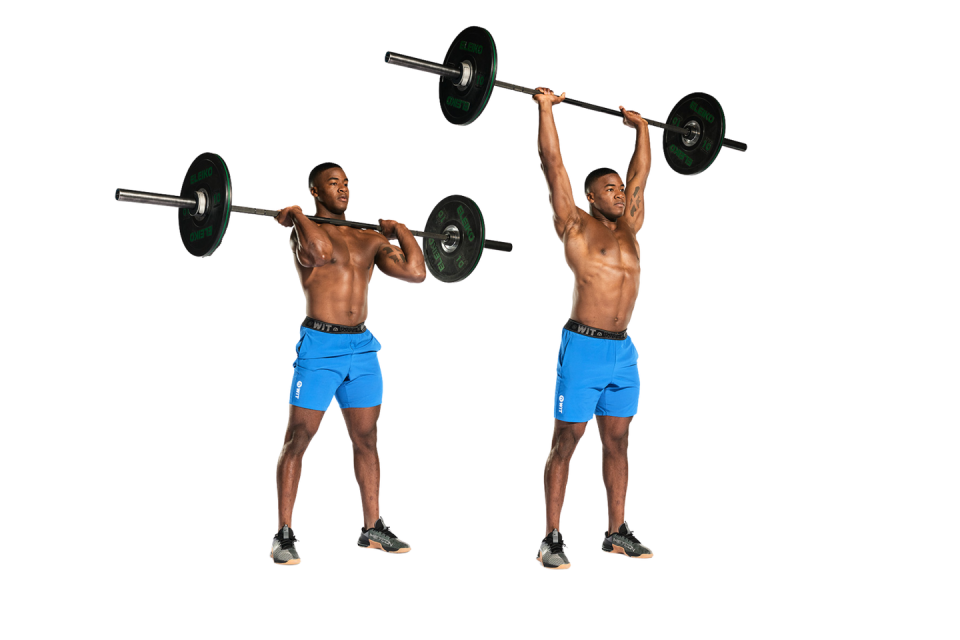
Overhead Press x 5/3/1 protocol
Wk 1: 3 x 5 @ 65%, 75%, 85%,
Wk 2: 3 x 3 @ 60%, 80%, 90%
Wk 3: 5,3,1 @ 75%, 85%, 95%
Wk 4: 3 x 5 @ 40%, 50%, 50% (deload week)
Overhead Press 5 x 10
Stand with feet shoulder-width apart, gripping a barbell across the top of your shoulders (A). Take a deep breath, create tension throughout your entire body and push the bar above your head, pause here (B). Slowly lower your bar back to your shoulders and repeat. Avoid excessive arching in your lower back throughout.
Pull-Ups or Lat Pull-Downs (or Chin-Ups) 5 x 10
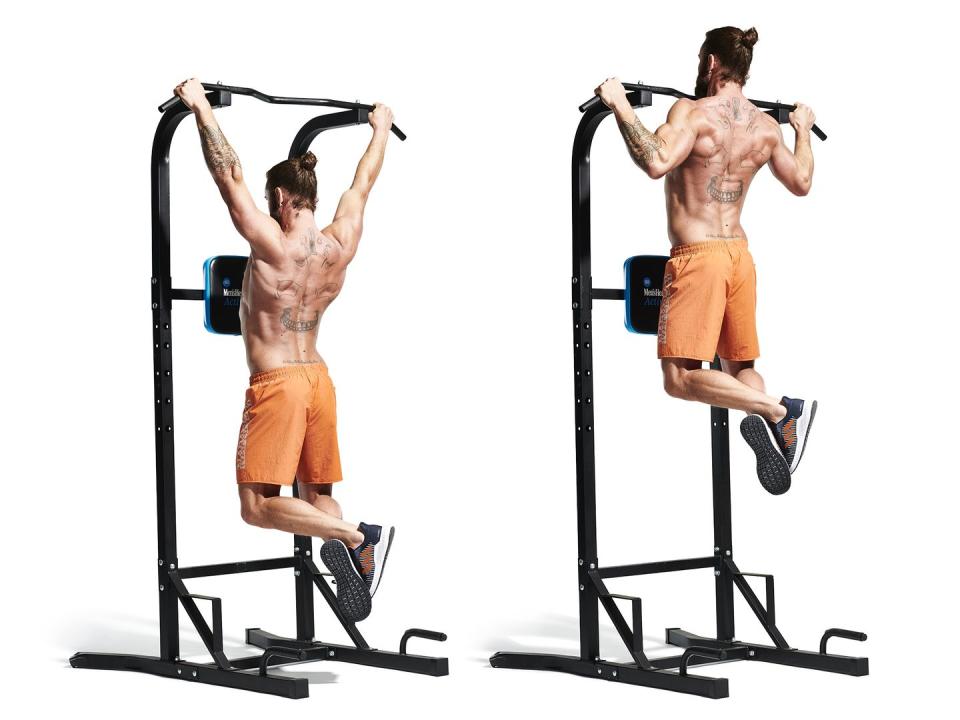
Grasp a pull-up bar with an overhand grip over shoulder-width apart, lift your feet from the floor, hanging freely with straight arms. (A) Pull yourself up by flexing the elbows while pinching your shoulder blades together. When your chin passes the bar, (B) pause before lowering to the starting position. If you can’t perform 10 chin-ups, use a band for assistance or switch to the lat pull-down machine.
Day 2:

Deadlift x 5/3/1 protocol
Wk 1: 3 x 5 @ 65%, 75%, 85%,
Wk 2: 3 x 3 @ 60%, 80%, 90%
Wk 3: 5,3,1 @ 75%, 85%, 95%
Wk 4: 3 x 5 @ 40%, 50%, 50% (deload week)
Deadlift 5 x 10
Hinge down with a flat back and grip your bar (A). Pull your hips down towards the ground, brace your core and create tension through your entire body before driving your feet into the ground and standing upright (B). Keep the bar close to your body and arms straight throughout. Focus on keeping tension throughout your entire body and avoiding excessive arching of the lower back.
Hanging (or Lying) Leg Raises 5 x 10
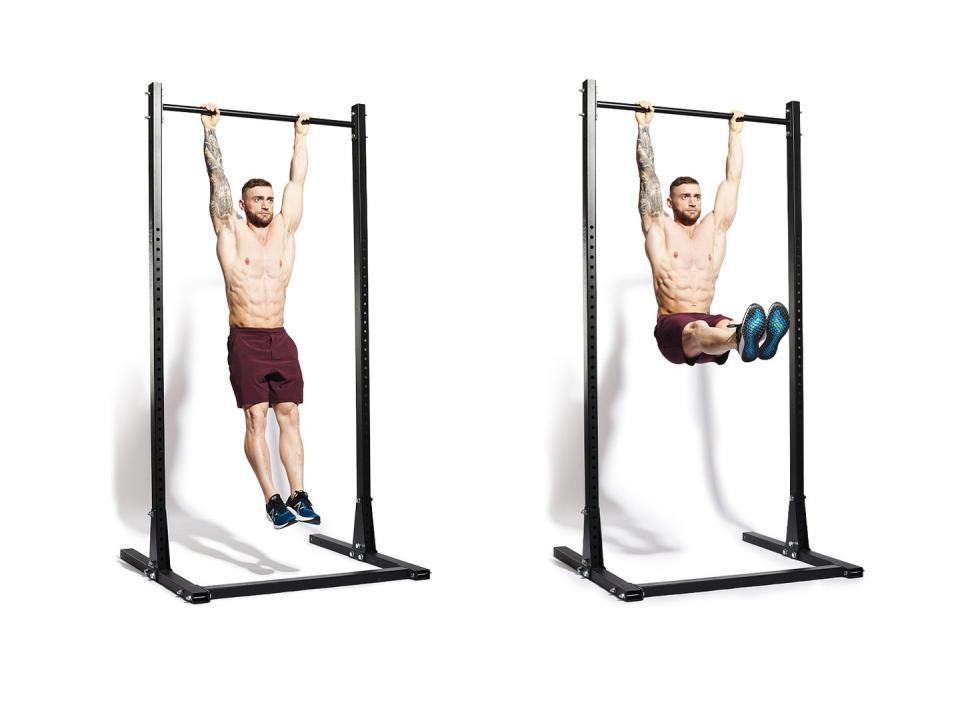
Hang from a bar (A). Focussing on contracting your abs hard, slowly lift your feet into the air keeping your legs straight until they’re above parallel to the ground (B). Slowly lower your feet, but don’t let them swing back behind you. Repeat, keeping tension on your core and avoiding swinging your legs.
Day 3:
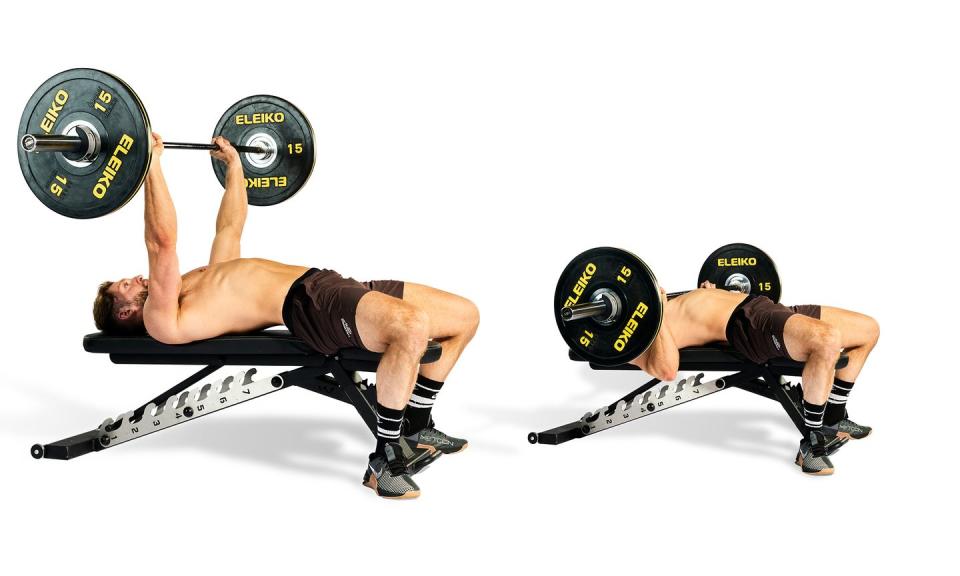
Bench Press x 5/3/1 Protocol
Wk 1: 3 x 5 @ 65%, 75%, 85%,
Wk 2: 3 x 3 @ 60%, 80%, 90%
Wk 3: 5,3,1 @ 75%, 85%, 95%
Wk 4: 3 x 5 @ 40%, 50%, 50% (deload week)
Bench Press 5 x 10
Lie flat on a bench, your knees bent, pushing your feet into the floor. Take the weight out of the rack, locking out your elbows (A). Lower the bar slowly until the bar touches your chest (B) keep your elbows at 45 degree angle, pause here before explosively pressing back up.
Three Point Row 5 x 10

Hold a dumbbell in one hand and hinge at the hips, placing your right hand onto a bench, box or wall for support (A). Take a deep breath and, avoiding twisting at the torso, explosively row the dumbbell up into your hip (B). Squeeze here briefly, then lower the weight under control until your arm is straight and you feel a stretch through your lats. Repeat. Perform prescribed reps, then switch and repeat with the opposite arm.
Day 4:
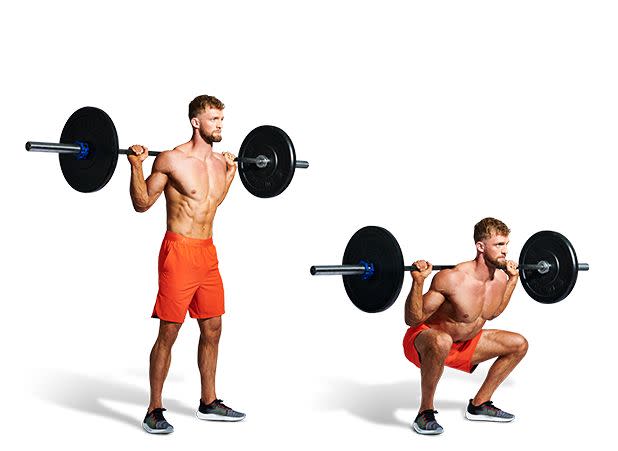
Barbell Back Squat x 5/3/1 Protocol
Wk 1: 3 x 5 @ 65%, 75%, 85%,
Wk 2: 3 x 3 @ 60%, 80%, 90%
Wk 3: 5,3,1 @ 75%, 85%, 95%
Wk 4: 3 x 5 @ 40%, 50%, 50% (deload week)
Barbell Back Squat 5 x 10
With your feet at shoulder-width, secure a barbell on your back, across the top of your shoulders, gripping it hard (A). Maintain a consistent torso angle as you push your hips back, bending your knees and squatting down until the crease of your hips drops below your knees (B). Stand back up explosively, take a deep breath and repeat.
Cable (or Band) Crunch 5 x 10
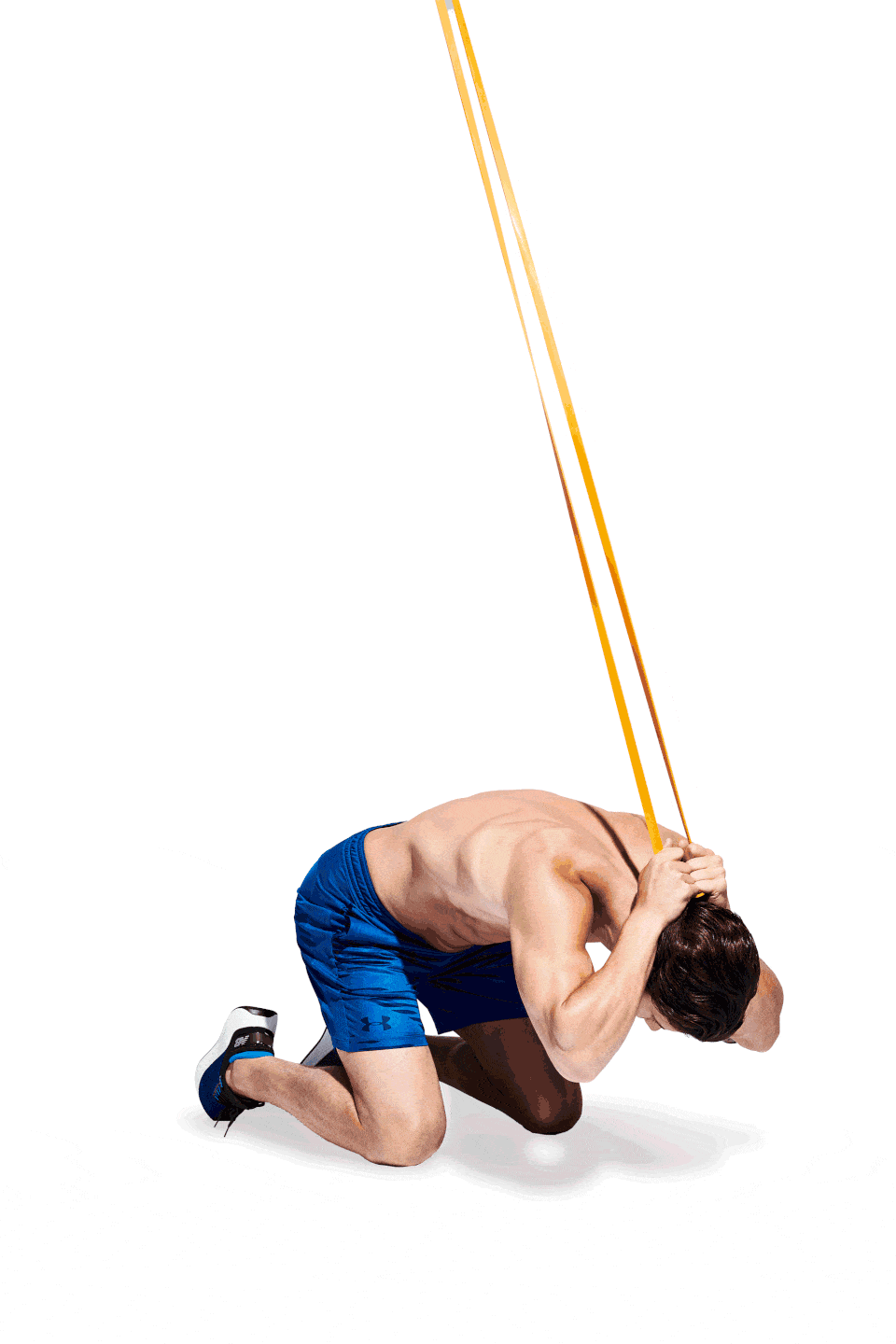
Kneel down in front of a cable machine or high anchored resistance band, grip the handles or band and pull it down to behind your neck (A). Crunch at the stomach, contracting your abs as you pull the weight down towards the ground, stopping as your head nears the floor (B) and slowly returning to the start position.
You can find out more about 5/3/1 and Jim Wendler's other work at his website and on his Instagram
More workouts like this
Three-Day 5x5 Powerbuilding Plan for Raw Functional Strength and Size
The Men's Health Dumbbell Club 150+ Muscle Building Dumbbell Only Workouts
Build Full-Body Size Fast with the Old-School 8x8 Method in Just 40 Minutes
You Might Also Like


